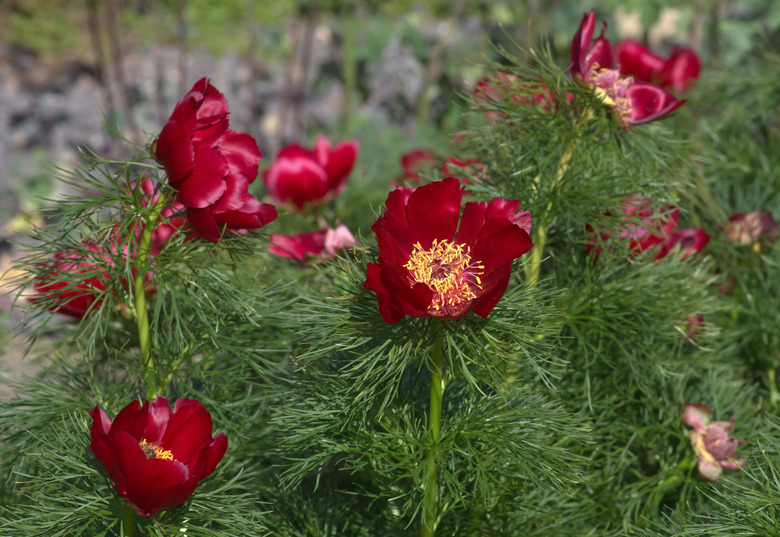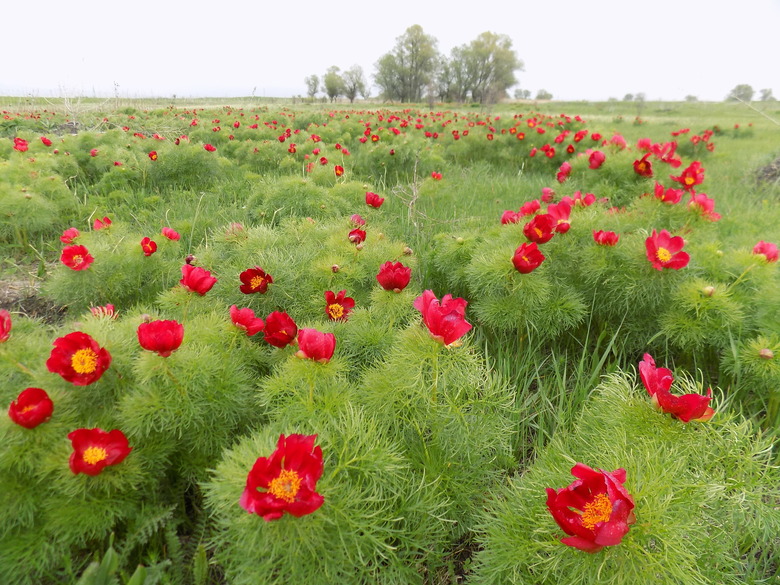How To Care For Fernleaf Peonies
The fernleaf peony (Paeonia tenuifolia; USDA zones 4 to 8) is a variety of peony that gets its name from its fine, thread-like foliage. While they can be more elusive and more expensive to purchase than other types of peonies, the fernleaf varieties have the advantage of being particularly long-living.
Fernleaf Peony Characteristics
Native to Eastern Europe, fernleaf peonies are distinguished by their deeply dissected leaves, which are reminiscent of ferns. Fernleaf peonies reach a maximum height of about 2 feet, which makes them the smallest type of peony available.
The flowers of the fernleaf peonies are a deep red color and have a width of about 3 inches. While each plant only blooms for a week or so, the foliage remains attractive and provides interest through summer and into fall.
In order to bloom in the spring, peonies must be exposed to 500 to 1,000 chilling hours, which means hours of exposure to temperatures between 32 and 40°F during the winter. Peonies that do not receive enough chilling hours may not flower.
Tip
Peonies must be exposed to temperatures between 32 and 40°F for 500 to 1,000 hours during the winter. Peonies that do not receive enough chilling hours may not flower in the spring.
Fernleaf Peony Culture
All peonies like soil that has a pH between 6.5 and 7.0. A soil test can tell you if the soil you are planning to use has the right pH for peonies.
It is also vital that the soil for fernleaf peonies be well draining and rich in organic matter. That may involve amending heavy clay soils with compost or other organic matter prior to planting. Peonies grown in soil that drains poorly may succumb to a condition known as root rot.
When choosing a location for your fernleaf peonies, keep in mind that they grow best when they receive at least six hours of sunlight a day.
Fernleaf Peonies Care
Established peony plants can handle dry conditions. Aim to water your fernleaf peonies deeply once every 10 to 14 days. Avoid getting the leaves when watering, as doing so can encourage the development of some diseases.
Peonies that do not receive enough nutrients may not bloom. To prevent this problem, you can feed your peonies in the spring with a fertilizer low in nitrogen to avoid encouraging foliage growth at the expense of blooms. Work in 2 or 3 pounds of fertilizer per 100 square feet of soil.
Tip
To control the spread of fungi that cause diseases on fernleaf peonies, it is important to cut peony plants down to the ground after the first frost of the fall and remove them from the garden.
Peony Care in Fall
After the growing season, it is good practice to remove spent flowers and seed heads from your fernleaf peony plants. This will allow the plants to conserve energy that they can put toward flowering the following year.
Peony plants are susceptible to a few diseases, including Botrytis blight (also known as gray mold) and Phytophthora blight. To control the spread of the fungi that cause these diseases, it is important to cut peony plants down to the ground after the first frost of the fall and remove them from the garden.
Fernleaf peonies do not need to be divided. However, if you wish to divide or move your peony plants, the best time to do so is in early autumn.

